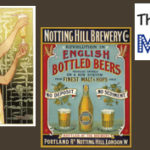Wykańczanie wina
Wino, które tylko opuściło pojemnik fermentacyjny, nie nadaje się jeszcze do spożycia. Są procesy, które na tym etapie są konieczne i są takie, których przeprowadzenie zależy tylko od wyboru winiarza, ale wszystkie one zaokrąglają smak, sprawiają, że wino nabiera niepowtarzalnego, często charakterystycznego dla winnicy smaku.
Drugie dno
Pierwsza fermentacja, którą przeprowadzają drożdże winne, prowadzi do powstania kwasu jabłkowego (poza, rzecz jasna, alkoholem). Kwas jabłkowy ma dość ostry, charakterystyczny i nieszczególnie przyjemny smak, dlatego większość win poddaje się jeszcze drugiej fermentacji, która przebiega z udziałem bakterii przekształcających kwas jabłkowy do mlekowego. Po tym zabiegu wino uzyskuje dodatkową nutę smakową, określaną jako smak słodkiej śmietanki. Nie jest to zabieg konieczny – powoduje on złagodzenie smaku wina, dlatego wielu producentów tańszych win go stosuje, natomiast najlepsze wina bywają niefermentowane po raz drugi, aby dać pijącemu pełnię możliwości smakowych – to jednak też nie jest zasadą.

Wino bez dojrzewania nie może istnieć, jednak to, jaką metodą i w ile czasu będzie wino dojrzewało, to już sprawa bardzo indywidualna. Klasyczne wina dojrzewają w beczkach dębowych i zajmuje to 15-24 miesiące. Można jednak dojrzewać wina w beczkach stalowych albo bezpośrednio w kadziach fermentacyjnych – wtedy często dodaje się jakościowe płatki dębowe, aby nadać alkoholowi smaku drzewnego i waniliowego, jaki normalnie uzyskuje się z leżakowania w beczkach drewnianych. Jeśli chodzi o beczki, to, w zależności od gatunku wina, używa się beczek nowych lub nie – jest to stały element receptury danego gatunku wina.
Klarowanie i filtrowanie
Podczas dojrzewania w kadzi lub beczce zachodzą pewne procesy, które mogą powodować mętnienie wina lub powstawanie osadu – jeśli wino nie jest idealnie klarowne, nie może trafić do sprzedaży, dlatego przed butelkowaniem filtruje się je i klaruje. Dopiero potem wino trafia do butelek, ale to jeszcze nie oznacza, że nazajutrz będzie dostępne w sklepie: najlepsze wina trafiają do sprzedaży dopiero kilka lat po butelkowaniu, ponieważ przeprowadza się jeszcze ich łagodne dojrzewanie w butelkach.
Dodatkowe czyszczenie lub wzbogacanie wina
Wino – jeśli taką stosuje się recepturę, może być podwójnie oczyszczane albo wzbogacane dodatkiem win owocowych. Są to sporadycznie stosowane zabiegi, które dotyczą jedynie win z niższej półki. W przypadku win lepszych możliwe jest kupażowanie roczników lub gatunków, ale nie miesza się wina gronowego z winem owocowym.
Kupażowanie
Kupażowanie, czyli mieszanie różnych roczników lub szczepów wina to proces umożliwiający powstanie produktu o właściwościach smakowych lepszych, niż mają trunki wyjściowe. Receptura kupażowania jest stała dla danego gatunku wina z danej winnicy. Jednym z najbardziej znanych kupaży jest hiszpańska Rioja, ale proces ten równie często wykorzystywany jest przez producentów tańszych, nieco gorszych win. Kupażuje się oczyszczone, sklarowane i przefiltrowane wina tuż przed rozlaniem gotowego wina do butelek. Kupaże nie są na etykietach oznaczane rocznikiem ani szczepami, z których powstają. Kupażowanie pozwala zachować jednolitą linię smaku przez cały okres produkcji, a więc niweluje skutki tak zwanego słabszego sezonu albo pozwala włączyć w proces winifikacji gorsze, mniej dojrzałe winogrona. Każda winnica ma swoje receptury kupażowania: nawet Rioja, która powstaje z tych samych szczepów w całym rejonie La Rioja, kupażowana jest w różnym stosunku z tych szczepów w kolejnych winnicach. Tradycyjna receptura to jedynie uśrednienie realnie stosowanych przepisów kupażowania.







